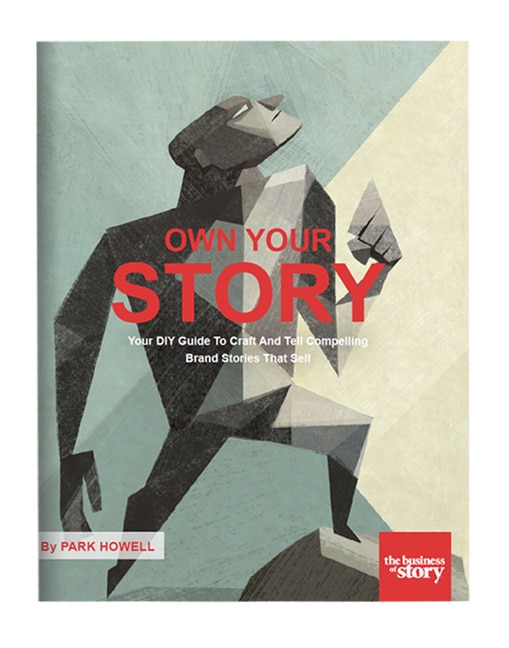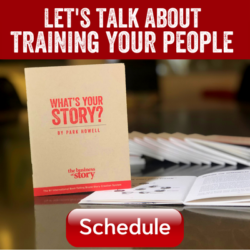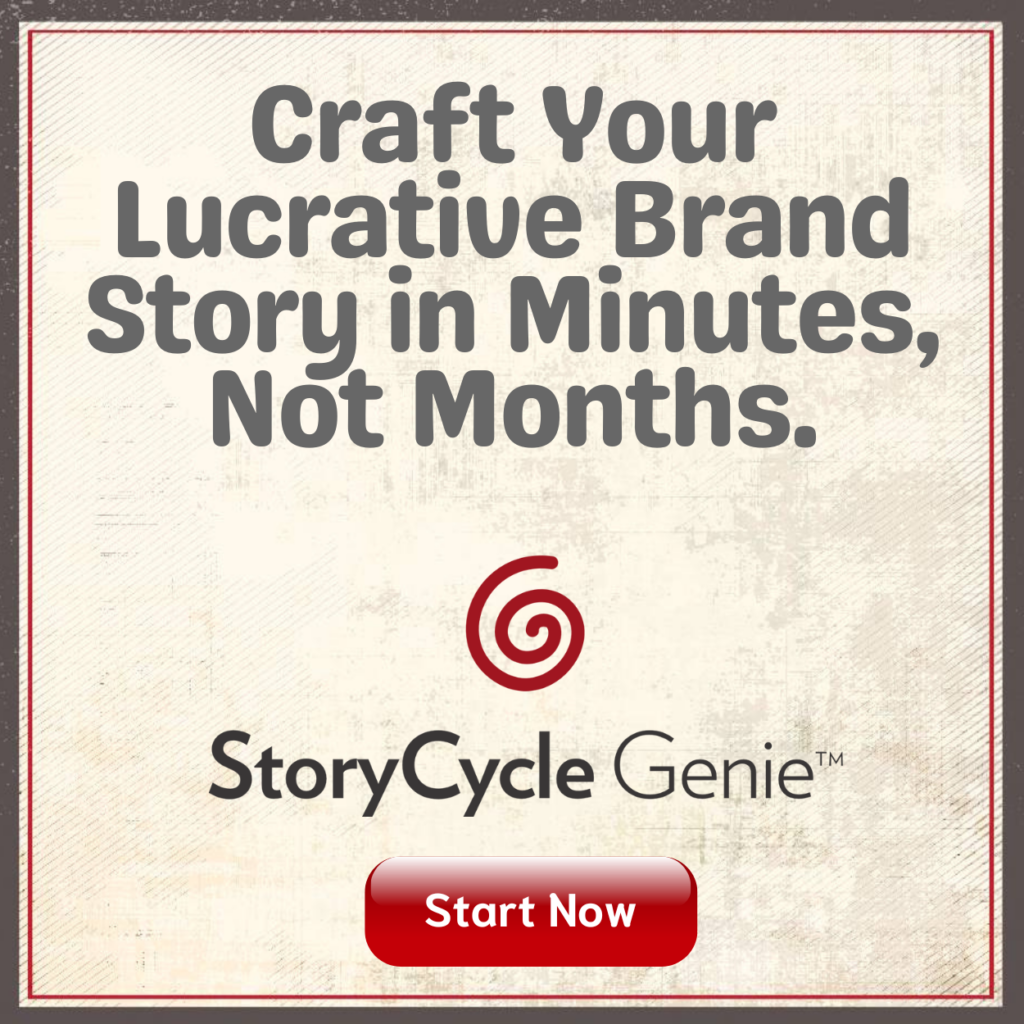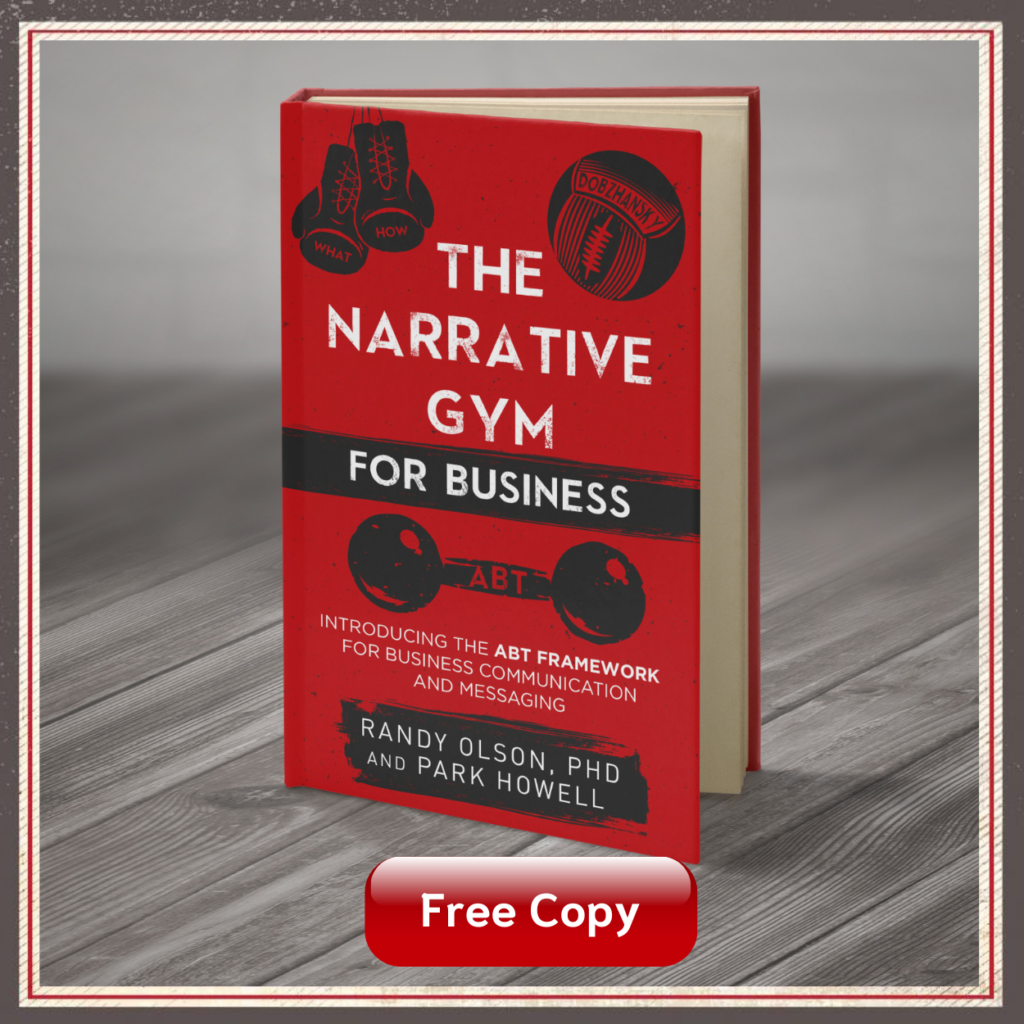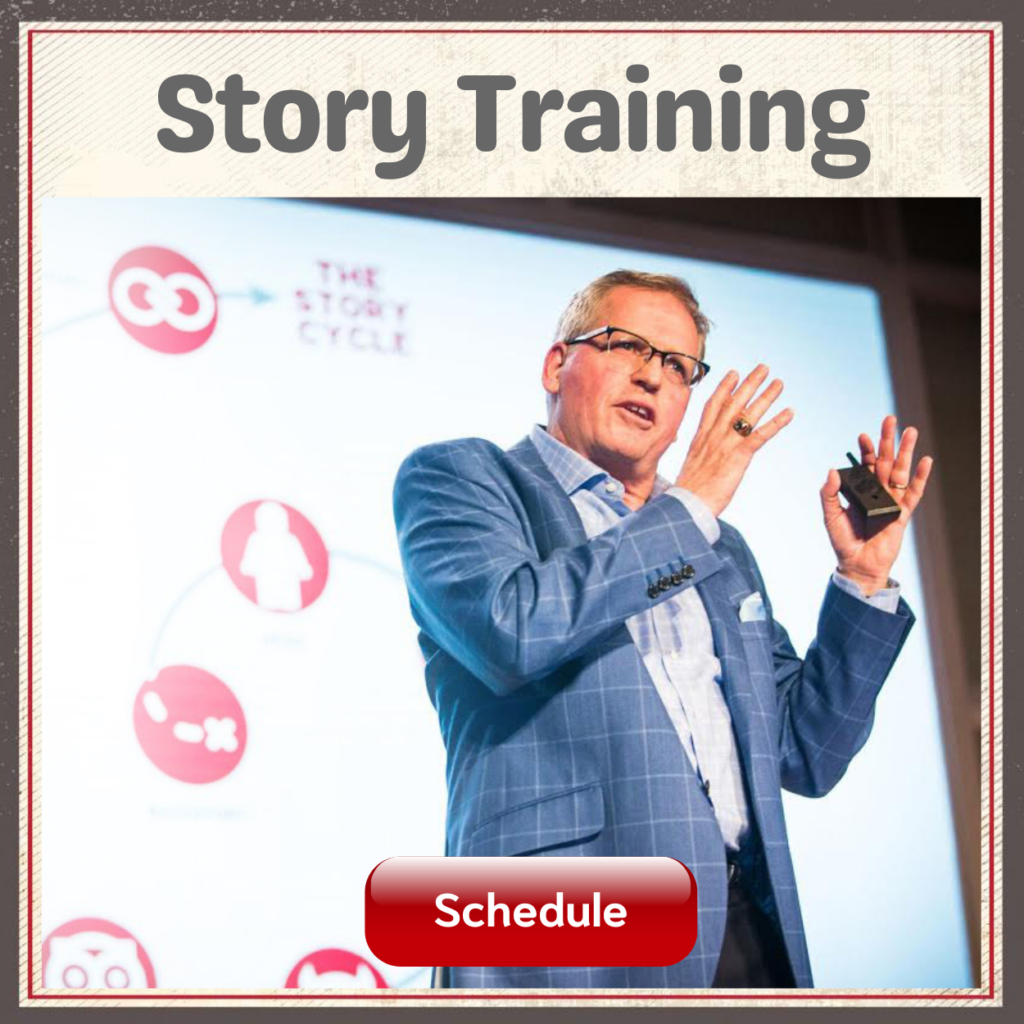#101: How to Tell Stories on Purpose to Grow Revenue and Amplify Your Impact
#101: How To Tell Stories On Purpose To Grow Revenue And Amplify Your Impact
I was struck by one theme that kept appearing in the past 100 Business of Story episodes – How stories transport us. A true story well told connects emotionally and inspires. It moves people. Aligns teams. Connects with customers. Grows revenue. And will amplify your impact.

Image from a favorite Photoshop artists, James Popsys, who explored visual storytelling on the Business of Story podcast.
Thank you for listening to the Business of Story. I’ve enjoyed all of your wonderful notes about the impact the show and our guests have had on you. And how you have grown as storytellers to literally nudge the world in any direction you choose.
You rock!
Now, I want to up the ante, to go all in by refining, clarifying and focusing my own Business of Story story. To help you do the same in your business. From episodes 102 and beyond, nothing in the Business of Story will make sense except in the light of connection: helping purpose-driven leaders like you clarify your story to grow revenue and amplify your impact in the world by connecting you with your audiences, and moving them to action, through the power of true business stories well told.
This is my singular focus for the Business of Story, and it has taken me 100 episodes to finally arrive at this focus. Plus, a great deal of help from my good friend, Greg Head. More on that, and him, in a bit.
What you’ll get out of this show is:
- How to find and articulate the unique purpose that drives you and your organization.
- How to clarify that story with lots of examples and resources for you.
- How to use the impact you’ll make as the launching point for the epic growth of your organization.
You see, after 100 amazing guests – story artists from around the world who have been on our show helping you craft and tell compelling stories that sell – this theme of igniting the growth of purpose-driven leaders through the power of story has expressed itself.
I realized that some of my favorite episodes were with people whose personal stories were much larger than their brand story, and in fact, influenced the direction of their organizations.
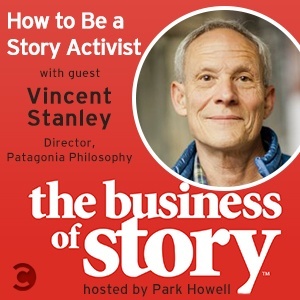 Like Vincent Stanley, for instance. He’s the Director of Philosophy for the outdoor retailer, Patagonia. He was one of my first guests back in July of 2015. And he talked about how Patagonia essentially invented story marketing in their first product catalogs when they opened in 1973.
Like Vincent Stanley, for instance. He’s the Director of Philosophy for the outdoor retailer, Patagonia. He was one of my first guests back in July of 2015. And he talked about how Patagonia essentially invented story marketing in their first product catalogs when they opened in 1973.
Their mission is to turn customers into activists to help protect our wilderness. A pretty important purpose, especially for an outdoor company.
Another episode I refer to often is the one I did with Hollywood story consultant, Jen Grisanti. She wrote an amazing book called Change Your Story, Change Your Life. Jen not only teaches and coaches movie and TV screenwriters how to perfect their craft but also how to live into a bigger story. This episode explores the important question:
“What is your personal dilemma connected to your professional pursuit?”
What’s the conflict in your story and how does your brand help your customers overcome that conflict to get what they want? No conflict no story.
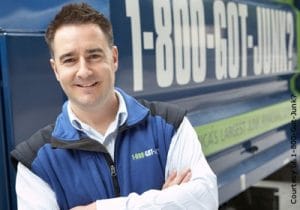 How about the conflict around the stuff cramming your home? Michele and I are in the process of a move, and mucking out 30 years of stuff is a major pain in the ass. Brian Scudamore, the founder of 1-800-GOT-JUNK, joined to talk about how he grew the brand to become worth in the neighborhood of a quarter-billion dollars all on the premise that he is not in the junk business, but the leadership business that happens to haul junk. Now that’s a focused, purpose-driven business.
How about the conflict around the stuff cramming your home? Michele and I are in the process of a move, and mucking out 30 years of stuff is a major pain in the ass. Brian Scudamore, the founder of 1-800-GOT-JUNK, joined to talk about how he grew the brand to become worth in the neighborhood of a quarter-billion dollars all on the premise that he is not in the junk business, but the leadership business that happens to haul junk. Now that’s a focused, purpose-driven business.
I’ve learned that if you truly want to live into a bigger story for your personal and professional brand, then you must find a purpose greater than yourself to serve.
The purpose of the Business of Story has always been to help people live into and prosper from their most powerful story. But that line is too vague for some people. It ultimately comes down to helping leaders of purpose-driven organizations clarify their story to grow their revenue and amplify their impact.
I know I’m repeating myself from the top of the show, but I want to be crystal clear with you what this is all about. And, I want to underscore that it is critically important for you, too, to be “crystal clear” with your personal or professional brand story. Because if you’re not, you will drown in the sea of sameness that we all compete in. And I’ve found that when you get your brand story straight, everything else comes into alignment. Everything else gets easier. You say “no” to more things and “yes” to the fewer, but the most important, things.
My Origin Story
Two years ago I was a total story geek. Ok, I still am.
My goal for the first 100 episodes was to help you understand and appreciate the power of storytelling in your business and in your life so that you would become more intentional about it; connect with people at a deeper level; and advance your visions and mission further faster. I had the help of my friend Jay Baer at Convince & Convert who helped me produce and distribute my first year-and-a-half worth of shows with great people like Jess Ostroff of Don’t Panic Management.
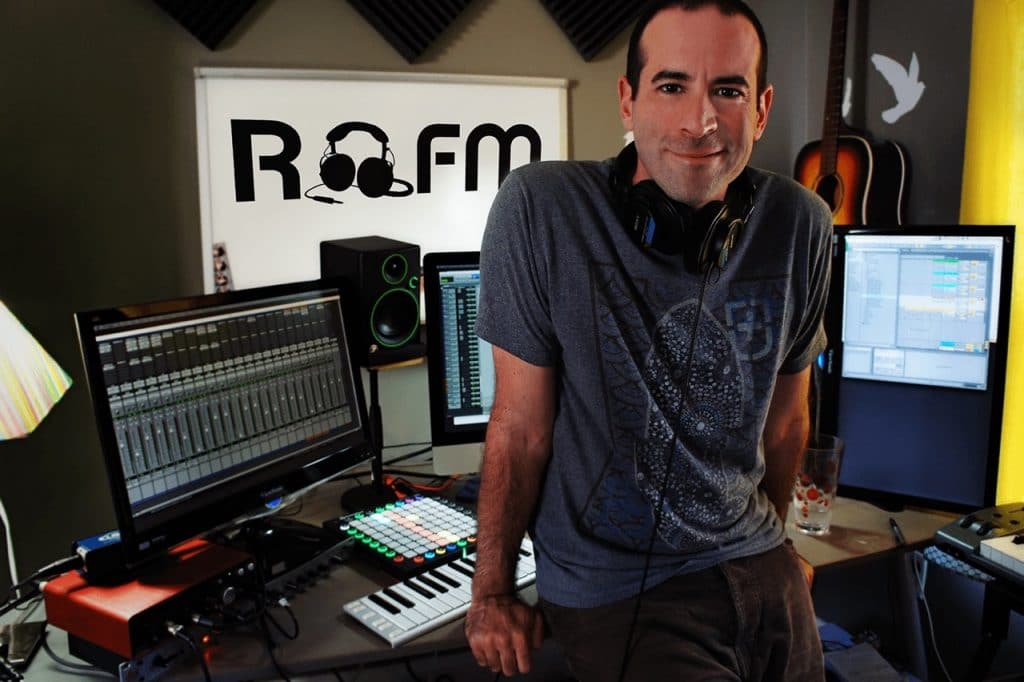
The past 20 or so shows have been produced by Brian Adoff of Riveting FM out of Philadelphia. He has brought a musician’s ear to the quality of the production and some terrific marketing insight as well. Thanks for that, Brian.
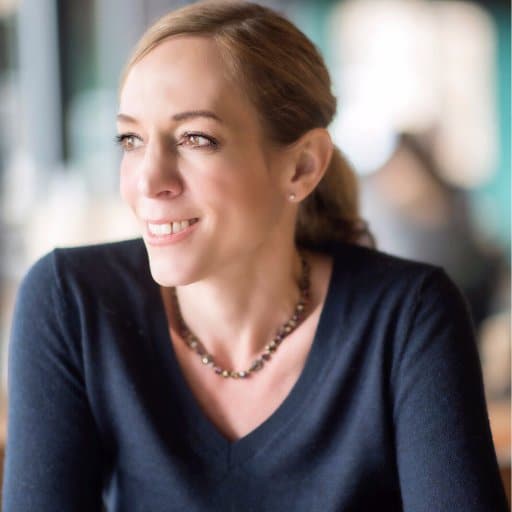 Lisa Loeffler of Genuine Media has assisted me in the distribution and advertising for the show, as well as my speaking engagements: an invaluable part of my team. I can’t recommend these two enough if you need to build a virtual team.
Lisa Loeffler of Genuine Media has assisted me in the distribution and advertising for the show, as well as my speaking engagements: an invaluable part of my team. I can’t recommend these two enough if you need to build a virtual team.
My focus has been on sharing how stories work, the architecture of epic stories, and how to use them in your business. If you’re an avid listener, then you probably know my story by now. So here’re the cliff notes…
I’ve been in advertising for more than 30 years, ran my own agency for 20 years, and for the past 15 years, I have been steeped in business storytelling.
My deep dive into brand storytelling began around 2004 when I noticed that our traditional advertising work wasn’t nearly as effective as it used to be. As I often say in my speaking engagements and workshops; “Brands used to own the influence of mass media, but now the masses are the media, and they are your brand storytellers. You and your brand must become the story maker.”
One of my favorite examples of a brand doing this very thing is AirBnB. They do a heroic job of placing their customers – both their homeowners and guests – at the center of their brand story. Then they make it easy for them to share their stories. I love their tagline, Belong Anywhere. AirBnB is selling inclusion and freedom: two pretty dynamic concepts, and an especially powerful purpose, given this moment – and let’s hope it’s just a moment – in Trump time.
By the way, have you seen Sweden’s latest story marketing campaign? The country just listed itself on AirBnB and its purpose is plain to see: “Explore the Freedom to Roam.” Sure, they’re ultimately going after tourists, but they do it with such a beautiful purpose that plays to the sensibilities of reasonable and fun loving people. Take a listen, and then go to our show notes to see the video.
Ok, so I digressed a bit. I get so excited when I come across smart story marketing.
I was telling you my story about how I realized the impact you can have when you become an intentional storyteller: Telling stories on purpose. I learned that storytelling held the key to reconnecting with audiences, so I started studying everything I could find on the subject.

It really started in 2006. Our middle son Parker went to film school at Chapman University in Orange, CA. I asked him to send me his textbooks when he was finished with them – after all, we were paying for them – so I could learn what Hollywood knew about captivating audiences through story. Plus, I suppose I wanted to vet this college education to see how Chapman prepared eager filmmakers to be competitive in the most competitive storytelling market in the world: Hollywood.

I realize now that this was my creative right brain diving into storytelling. At the same time, our youngest son Caed had to undergo brain surgery to reduce swelling in his ventricles. During the run up to survey, Caed went through a battery of tests, and Michele and I read everything we could absorb about the brain and how it functions under the significant stress of encephalitis.
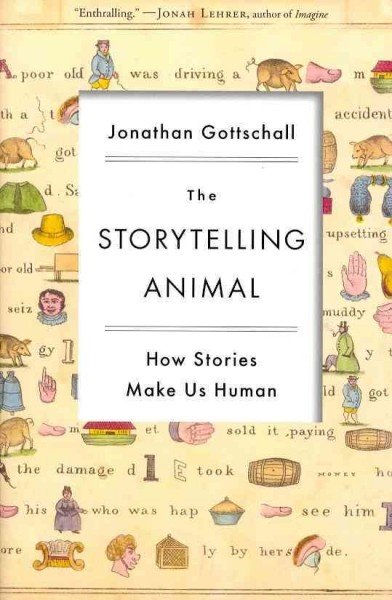 One of the books I found, which has become my favorite on storytelling, is The Storytelling Animal: How Stories Make us Human, by Jonathan Gottschall. In it, he explores the intersection of story structure with brain structure and how our minds yield helplessly to the suction of story.
One of the books I found, which has become my favorite on storytelling, is The Storytelling Animal: How Stories Make us Human, by Jonathan Gottschall. In it, he explores the intersection of story structure with brain structure and how our minds yield helplessly to the suction of story.
Jonathan became a long-distance friend of mine, has been kind enough to lecture twice to my students at Arizona State University, and he was also one of my first guests on the Business of Story podcast.
In hindsight, I realized that I, too, was living at the intersection of right brain Hollywood storytelling and left brain story mechanics as I was learning from the journeys both of our sons were on.
This is when I was introduced to Joseph Campbell and his universal story structure of The Hero’s Journey, and why it connects so powerfully with the deep reaches of our mind: the subconscious where our intuitive decisions are made that shape our beliefs and behaviors.
Note: The creator of What makes a her0?, Matthew Winkler, joined us on the Business of Story podcast. Hear how he created one of the most watched videos in the TEDEd library.
During this time between 2006 and 2010, I found myself at the crossroads of the neuroscience of storytelling – how we’re pre-wired from birth to make meaning through stories – with the architecture of stories – how to use them to connect with people on a very primal level and move them to action.
Since then, our two boys are doing great. Caed is a healthy 23-year-old composer and producer of EDM, or Electronic Dance Music, and a DJ, and Parker is pursuing his dream of becoming a filmmaker in downtown Hollywood. He pays the bills as a sought after motion designer, and you can see his work in the new CBS game show, Candy Crush.

The Spiral Narrative Structure captured in the Story Cycle System™ to Increase Customer Engagement With Every Revolution.
Now that I was armed with the why and how of business storytelling, I created the Story Cycle system that is inspired by Campbell’s Hero’s Journey. Instead of his 17 steps, I’ve mapped it to 10 steps that any business can use for high-level brand story strategy development right down to tactical creative elements including TV spots, web user experience design, blog posts, print ads, sales presentations… you name it.
I was so excited to share with the world what I had learned, and the success we were having with our clients, that I began pursuing all of the brightest minds in storytelling to share their brilliance with you. To be totally honest, I was being self-serving, too, Because I get to learn right along with you with every episode. That alone makes all of the cost and effort of a podcast worth it.
One of my early successes was having legendary screenwriting coach, Robert McKee, on the show. We had such a wonderful conversation, he returned for an encore performance. By the way, you will find links to each of the episodes I mention in our show notes.
I first met McKee when I attended his four-day Story Seminar in the LAX Sheraton in 2010. Parker joined me. He was there to advance his filmmaking screenwriting chops, along with about 200 of his competitors, and I was there to learn what a marketer like me could learn about Hollywood storytelling to make our creative more impactful.
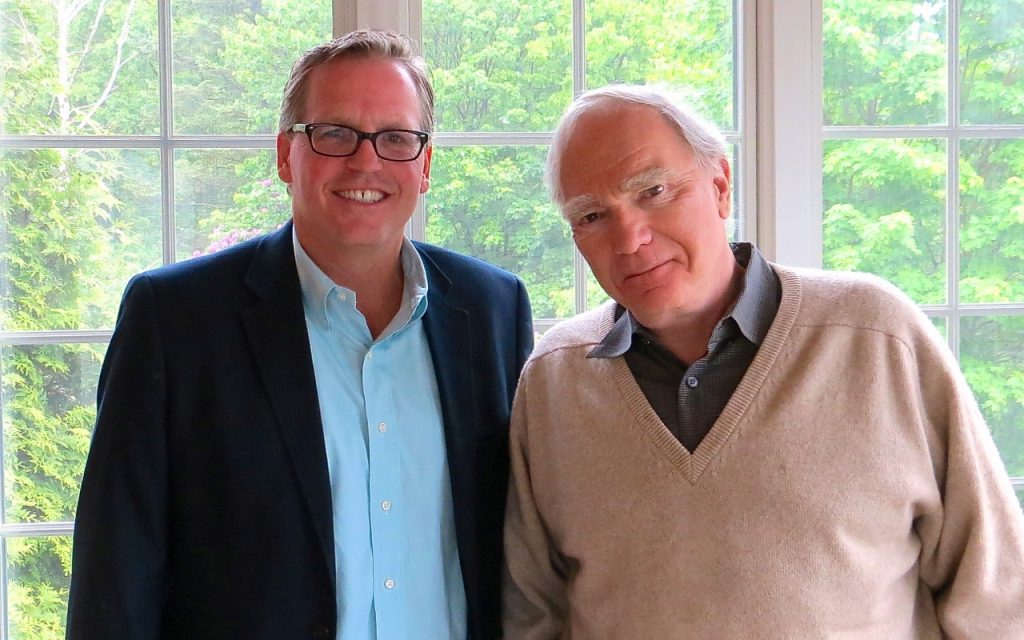
After the seminar, McKee invited me to his Connecticut home to interview him for my podcast. Now, this was not for the Business of Story, but for my very first flailing attempt at podcasting. I had never done one before and I showed up in his living room with my little Zoom recorder and my wits. I placed the recorder between me and him on the sofa, and away we went. For three friggin’ hours. He was so kind and generous with his knowledge on screenwriting and how we can use it in our businesses, and I was making it up and learning as I went.
This remarkable experience underscores a fundamental premise that Joseph Campbell talks about when you follow your bliss, and by bliss, he means the authentic story you have the courage to live into.
“When you follow your bliss, doors will open where there were only walls before.” – Joseph Campbell
Robert McKee and his lovely wife Mia, open their home and their world to me. And for that, I will be forever grateful. You can still listen to that session, edited into ten 10-minutes segments on Soundcloud.
If you don’t know the man and his work, all you have to do is watch this scene in the Spike Jonze’ movie, Adaptation, starring Nicholas Cage as struggling screenwriter, Charlie Kaufman. Actor Brian Cox portrays McKee as he responds to Kaufman’s question during, presumably, his famous Story seminar.
Any questions?
Ok, take a deep breath.
Another one of my favorites was a guy who epitomizes the intersection of science and story, and that is Dr. Randy Olson. He is a Harvard Ph.D. Biologist who also graduated from the USC film school. Randy has produced three documentaries on the environment and climate change and has written three books to help scientist become better communicators through the power of storytelling.
 His latest book, Houston, We Have a Narrative: Why Science Needs Story, is my favorite scientific look at storytelling. The book focuses on the And, But and Therefore construct to creating stories. It’s so simple and yet so powerful. I call it the DNA of story.
His latest book, Houston, We Have a Narrative: Why Science Needs Story, is my favorite scientific look at storytelling. The book focuses on the And, But and Therefore construct to creating stories. It’s so simple and yet so powerful. I call it the DNA of story.
I’m honored to say that Randy has become a good friend, and he’s been on my show twice. The first time talking about the ABT. And his most recent appearance was the day after the election. He dissected Trump’s narrative intuition and why he won the election because he out-storied the Democrats. “America used to be great. America is no longer great. I’ll make America great again.” Three acts. Set up, problem, resolution. One that may become the most successful use of the ABT of all time.
Olson’s Trump episode is one of my most listened to from around the world. I even had some friends reach out to me in disgust suggesting that I was capitalizing on Trump’s victory for my own Business of Story gain by highlighting his narrative intuition. My response to them, and you if you feel the same way, is that you must understand the magic to combat the spell.
Listen to all of Trump’s ramblings through the lens of the basal ABT structure, and you’ll get a whole new appreciation for how he hoodwinks his base, goes against reason and demolishes the Democrats. The Dems simply don’t know how to connect with America through a story.
Olson’s purpose is to advance science by helping big thinkers connect with the rest of us. His vehicle happens to be the ABT, the DNA of story.
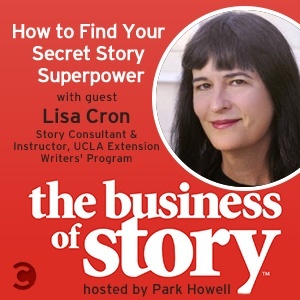 Another of my favorite authors is Lisa Cron, who wrote Wired for Story: The Writer’s Guide to Using Brain Science to Hook Readers from the Very First Sentence. Lisa came on the show to explore the art and science of storytelling to help you with your brand narratives.
Another of my favorite authors is Lisa Cron, who wrote Wired for Story: The Writer’s Guide to Using Brain Science to Hook Readers from the Very First Sentence. Lisa came on the show to explore the art and science of storytelling to help you with your brand narratives.
While Lisa’s book is about guiding fiction writers in writing the next epic novel, Lee Gutkind, the founder of Creative Nonfiction and author of several books including, You Can’t Make This Stuff Up: The Complete Guide to Writing Creative Nonfiction from Memoir to Literary Journalism, is the foremost authority on the art of sharing true stories well-told.
These two approaches are important to brand storytelling because you want to tell true stories about how your product or service have empowered and leveled up your customers while using brain science to understand and appreciate how to craft and tell your stories.
Clarify your story, amplify your impact and simplify your life
We’ve used the 10-step Story Cycle system to help Clinica Adelante reframe its brand story from a 30-year-old community health center to a national leader in sustainable healthcare, and they have grown by 300 percent in the past five years.
Goodwill of Central Arizona has used or Story Cycle system to grow from 17 stories doing $24 million in annual sales in 2003 to nearly 100 stores doing north of $140 million in sales today, with the proceeds going to workforce development programs that help put a record number of Arizonans back to work. Their purpose? Good stuff, good work, Goodwill.
Coca-Cola used our storytelling to launch an eco-driving program with its 60,000 fleet drivers and their staff in 2010. They double their expected gains in fuel efficiency in the first three months of the initiative.
What do these three clients have in common? They all pursued a purpose greater than just selling products and services and making money. And they used intentional storytelling – telling stories on purpose – to achieve epic growth.
That is the power of a purpose-driven organization over its traditional, status-quo competitor who focuses on the bottom line, short-term gains and investor returns over empowering the people and the communities it serves.
Tell your stories on purpose
That’s why now, as we move into our third year of producing the Business of Story podcast, our sole focus is to help leaders of purpose-driven organizations like yours clarify your story to grow revenue and amplify your impact.
What we make is the proven Story Cycle system with tools and techniques to help you become an intentional storyteller. But what we make happen is helping you become a more powerful communicator, connect with audiences like you never have before, motivate and inspire people to action, and advance your mission, initiative or cause further, faster than you ever imagined. What we make happen is what drives our purpose: to help people live into and prosper from their most powerful stories.
Learning moment: Are you telling brand stories about what you make, or what you make happen? Stories about the human impact you are having; how you are leveling them up. Stories about how you deliver on your ultimate brand purpose. You see, when you tell stories about what you make, your are immediately commoditizing yourself and your offering. You start to drown in the sea of sameness. But when you tell stories about what you make happen, then you will rise above the noise and be heard.
Red Bull doesn’t sell you a highly addictive concoction of caffeine, taurine, and sugar. Their story Gives You Wings. Actually, the higher brand purpose was defined by its founder, Dietrich Mateschitz, when he started his company:
“Red Bull gives wings to people and ideas.”
Now isn’t that a bit more compelling than selling just an energy drink? It must be because Red Bull not only invented the category. They still own nearly half of the worldwide market for energy drinks.

Let’s face it, without a good story that connects on a primal, visceral level with your audiences – making them truly feel something – then you’re just more noise in the cacophony of communication we all swim – and drown – in.
Without a focused story that clarifies the uniqueness, relevance, and urgency of your brand offering you will be marooned in the sea of sameness that we all encounter in this age of abundance. Your customers – just like my customers – simply have too many choices to choose from. What’s going to make you rise to the top of your food chain?
Without a defined point to your story – a supreme focus on what you do better than anyone else buttressed by a compelling purpose – you will languish in the land of commoditization. In fact, declaring your number one position in the marketplace, what you do better than anyone else in terms of features and benefits, is your first step out of the primordial muck of commoditization. And your defined purpose is your lifeline.

So I’m taking my own advice. As I mentioned, my friend Greg Head, who was the head of marketing for Infusionsoft and helped them become a $100 million dollar company in 10 years because of their extreme focus on sales and marketing software for small business, helped me define my brand focus of working with purpose-driven leaders. It’s important, too, because I am competing in an increasingly crowded industry of business storytelling.
Some of my competitors I admire most – some friends, some acquaintances, and some strangers – include Donald Miller and his StoryBrand process. I’ve done his program myself for my Business of Story brand. StoryBrand’s focus is to help small business grow their sales by clarifying their story on their websites.
 My interesting connection to Don, even though I’ve never met him, is that his best-selling book. A Million Miles in a Thousand Years, and it’s overall theme of “What makes a great story also makes a great life,” had a profound impact on me as I was creating the Story Cycle system. In fact, I went to Don’s very first seminar in Portland in 2010, long before he created his StoryBrand process, to guide my thinking on how to help people live into their most powerful stories.
My interesting connection to Don, even though I’ve never met him, is that his best-selling book. A Million Miles in a Thousand Years, and it’s overall theme of “What makes a great story also makes a great life,” had a profound impact on me as I was creating the Story Cycle system. In fact, I went to Don’s very first seminar in Portland in 2010, long before he created his StoryBrand process, to guide my thinking on how to help people live into their most powerful stories.
In fact, I went to Don’s very first seminar in Portland in 2010, long before he created his StoryBrand process, to guide my thinking on how to help people live into their most powerful stories.
Another terrific professional in the storytelling game, and a guy I count as a friend is Michael Margolis of GetStoried. When I think of Michael and the international work he does, I think of storytelling around innovation. He works with large, global brands, including the likes of Google, Deloitte, and NASA, to help them further innovation within their organizations. Michael is definitely the innovation story guy in my book.
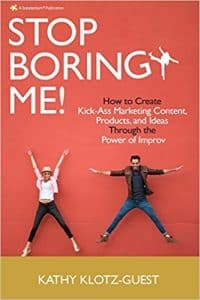 If you’re looking for business storytelling in the tech world with a twist, then I’d definitely send you to Kathy Klotz-Guest. If you’ve ever seen HBO’s Silicon Valley, Mike Judge’s hysterical TV series about, well, Silicon Valley, then you’ll get a sense of Kathy.
If you’re looking for business storytelling in the tech world with a twist, then I’d definitely send you to Kathy Klotz-Guest. If you’ve ever seen HBO’s Silicon Valley, Mike Judge’s hysterical TV series about, well, Silicon Valley, then you’ll get a sense of Kathy.
She is a technology veteran, stand up comic and marketer extraordinaire who uses storytelling to help her clients curb what she calls, “jargon-monoxide,” you know, that curse-of-the-expert malady that puts audiences to sleep, or worse, with their inane use of jargon. She coined one of my favorite terms in Business Storytelling, Jargon-monoxide.
These are just three of many fellow storytellers, each with a focused brand position: Don Miller’s StoryBrand for small businesses. Michael Margolis’ Get Storied for large organization innovation, and Kathy Klotz-Guest for the tech world.
By the way, you can hear both Michael and Kathy on my Business of Story show – again, see the show notes for links. And Don, consider this an open invitation to come on my show. Like Michael and Kathy, I admire your work and what you stand for. Hey, I even invested in your Blue Like Jazz movie. That was a brilliant crowd-sourced move, by the way, to raise your final quarter million to get the movie finished. Michele and I loved the movie, and it was great fun seeing our names among the thousands of executive producers.
I help leaders tell their brand stories on purpose
And me? My purpose is to help leaders of purpose-driven organizations like you clarify your story to drive revenue and amplify your success. And I deliver on my purpose in three different ways…
I help you clarify your brand story through our proven Story Cycle system. In fact, if you tuned into my show two weeks ago, you heard me take Jonathan Barney through the Story Cycle system to clarify his brand story around his restaurant service training platform and focus his purpose of helping people live a tastier life.

In addition to clarifying your brand story, I also offer the Storytelling for Leaders and Storytelling for Sales 6-month deliberate practice training programs. Once your brand story is crystal clear, these programs help you find and tell the stories that shape the behaviors that create the culture that drives epic performance. Around your purpose. Essentially, we help you find the true stories within your brand and show you how to tell them well in your advertising, marketing and sales to connect with your audiences. True stories well told.
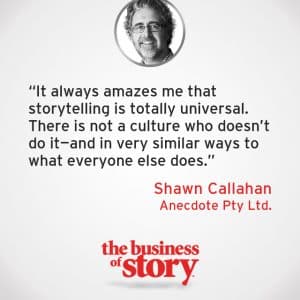 The Storytelling for Leaders and Storytelling for Sales deliberate practice programs come from another amazing story outfit, this time in Melbourne, Australia. Shawn Callahan and Mark Schenk created these programs 13 years ago and have worked with brands around the world to build storytelling cultures. This offering is the ideal extension to the Business of Story, and I have become a certified partner delivering these proven programs.
The Storytelling for Leaders and Storytelling for Sales deliberate practice programs come from another amazing story outfit, this time in Melbourne, Australia. Shawn Callahan and Mark Schenk created these programs 13 years ago and have worked with brands around the world to build storytelling cultures. This offering is the ideal extension to the Business of Story, and I have become a certified partner delivering these proven programs.
Why do purpose-driven organizations need to practice business storytelling now, more than ever, to amplify your impact?
Because business is more complex than ever. How do you describe your place in the world to your staff, employees, customers, shareholders and other stakeholders when so much external chaos impacts you?
- Chaos like growing competition in this time of abundance
- A widening economic divide between the haves and have-nots
- The significant environmental and social impacts of climate change
- Social injustice and unrest
- A White House and its cronies that appear hell bent on alienating America from the rest of the world
In fact, I spent 12 days in The Netherlands a couple of weeks ago working with our ASU students. Guess what the prevailing sentiment is towards our president? I heard this from business leaders, bureaucrats, and bartenders. They ask all in their own way:
“How did you Americans let this happen and what are you going to do about it?”
You don’t think this president is going to impact your business, think again. And what stories are you telling your employees to keep them all focused on your purpose to grow your sales and amplify your impact: the three things you actually have control over?
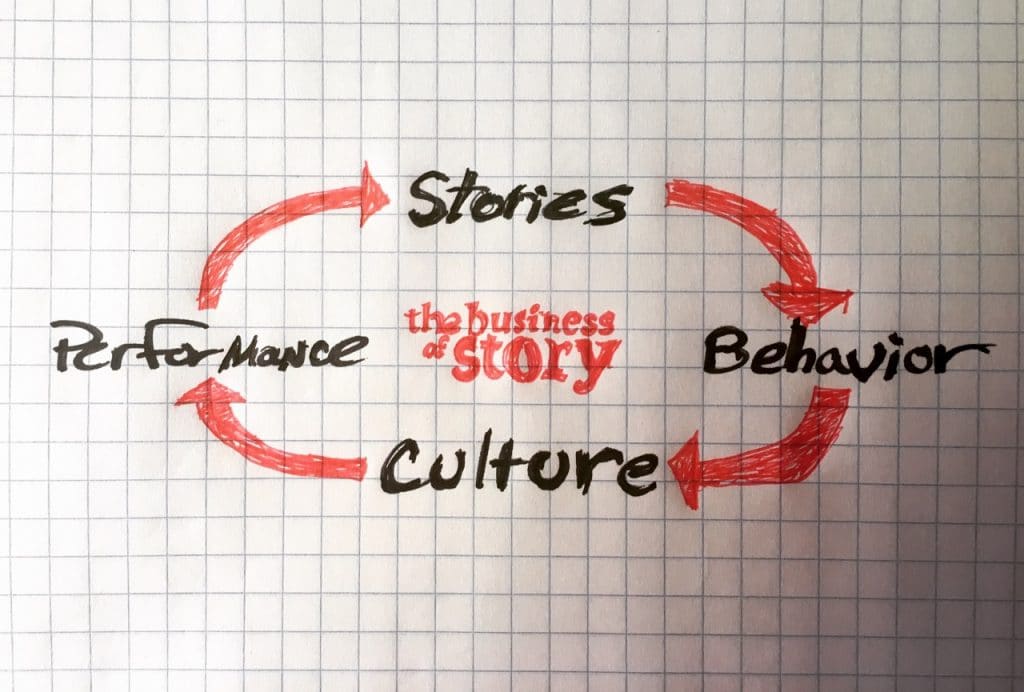
I’m afraid powerpoints, infographics, snapchats and tweets aren’t going to do it for you anymore.
By the way, I reminded our students in Amsterdam that powerpoints don’t kill audiences. Presenters using bullets in powerpoints do.
 Don’t believe me? Just listen to Janine Kurnoff of the Presentation Company on Business of Story to learn how to bring storytelling to all of your communications so you can cut through the clutter and connect.
Don’t believe me? Just listen to Janine Kurnoff of the Presentation Company on Business of Story to learn how to bring storytelling to all of your communications so you can cut through the clutter and connect.
Or tune into Nick Gray of Museum Hack on how to bring adventure to your brand through storytelling. And on that note, take in my conversation with the ultimate conspirator to business success, Robert Rose on why you must turn your adjectives and adverbs into adventures in your story marketing.
Stories connect in our disconnected world
Another reason why story is more important now than ever is that our uberly connected world has created a massive malady. Attention Deficit Disorder is now a communicable disease, and we’re all the viruses.
Our connected world has ironically made us all less connected in human terms.
I had a fascinating guest on about a month ago. His name is Jordan Bower, a Transformational Storytelling Consultant, and Corporate Intimacy Expert. Ahhh, see his unique positioning… his fine point… his focused purpose: Transformational Storytelling Consultant and Corporate Intimacy Expert? On my show, Jordan told me about his girlfriend breaking up with him in the summer of 2010.
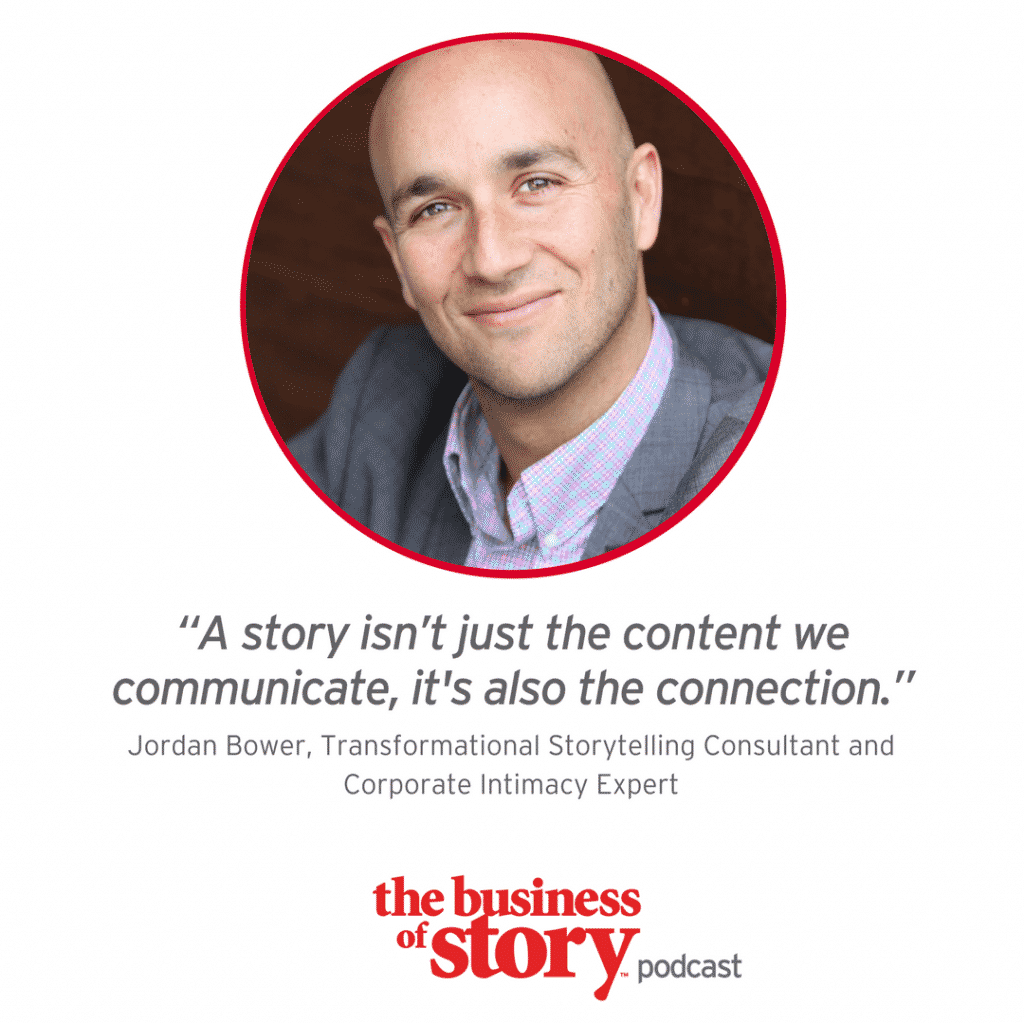 Devastated, he did what we would ALL do in this circumstance: he walked from Seattle to Mexico along the Pacific Ocean. Right? During his four-month odyssey to find himself, Jordan came across thousands of people.
Devastated, he did what we would ALL do in this circumstance: he walked from Seattle to Mexico along the Pacific Ocean. Right? During his four-month odyssey to find himself, Jordan came across thousands of people.
He shared coffee, meals, campfires, and beers with folks from all walks of life: from hobos and hillbillies to surfer dudes, to housewives, tech titans and I’m sure there was a social media guru or two in there as well. I asked him what the common theme was among these disparate people. What do you think he said?
I asked him what the common theme was among these disparate people. What do you think he said?
Jordan told me that to a person, the common sentiment was alienation and loneliness.
He learned on his trek that these dopamine pumps we call iPhones and Androids, that promise to connect us with the world, actually create greater isolation. One intense symptom is FOMO, or the fear of missing out. What we’re missing in our over-communicated world is authentic, person-to-person interaction. If Gottschall said, “Our minds yield helplessly to the suction of story,” then I believe our hearts crave bonding with real people.
Jordan’s point of people feeling alienated and lonely is not the first time I’ve heard this theme. But it struck me hard on this show. I even created a manifesto of sorts just to help me get my head around this phenomenon. I call it: The Virtual Connection Myth.
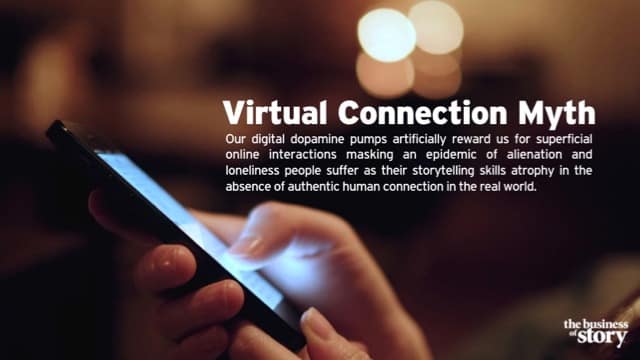
“Our digital dopamine pumps artificially reward us for superficial online interactions masking an epidemic of alienation and loneliness people suffer as their storytelling skills atrophy in the absence of authentic human connection in the real world.”
OMG, am I suffering from jargon-monoxide?
My point is this: The most powerful story will ever tell is in-person. If you can’t be in front of the water cooler with your audience, then the second most powerful story you can tell is first person, online.
Tell me a story with a time stamp, when did it happen, a location stamp, where did it happen, real people as the characters. Give me action and adventure, surprise me, and then deliver your business point! And believe it or not, you can do this in 60 seconds or less.

On Thursday, June 26, I was giving a storytelling workshop for a bunch of Dutch professionals who specialize in sustainability and the circular economy in Haarlemmermeer, Holland. A young man named Max is an intern for one of the organizations and is about to graduate with his business degree in sustainability.
I asked the gathering who their toughest audience was so we could work on stories to connect with them on their terms. Max told me it was his granddad. You see, his grandpa didn’t understand sustainability, didn’t believe in man-made global warming and told Max he was wasting his time with his foolish degree. I could tell he was crestfallen by not having his grandfather’s approval.
So I instructed Max to use the Story Cycle to craft a story from his grandpa’s point-of-view and then challenged him to share his story over the weekend.
I ran into Max four days later when our ASU cohort returned to Haarlemmermeer for another session. He had the widest smile on his face. I asked him “What’s up, dude?”
He told me about having the conversation with his grandpa about climate change and how he used a hockey stick to demonstrate to the old man how carbon in our atmosphere has remained relatively balanced for millennia and then pointed to the curve end of the stick to demonstrate the man-made carbon we have pumped into the system over a short amount of time.
“This was the first time my granddad ever understood what I was talking about,” Max proclaimed through his smile. “And I told him that fixing this problem is important to me and that’s why I’m doing what I’m doing.”
I asked Max if his granddad likes hockey.
“Loves it,” he said, with his smiling growing even wider.
Smart young man, that Max. Understanding his audience and having such empathy for their point-of-view that he found a way to use a story to connect, change his beliefs, and earn his approval.
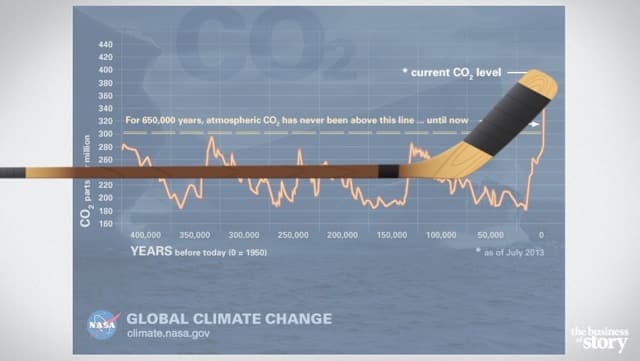
I used Max’ story and this slide to demonstrate the power of a simple story in business on my webinar with Vertical Measures.
By the way, I learned this basic structure to story with time and location stamps, characters, action, a surprise and point from my friends at Anecdote. And we cover it in great detail in our 6-month deliberate practice programs.
The most invaluable FREE advice you’ll ever get
Now I’d like to help you clarify your brand story strategy, focus your purpose to grow your revenue and amplify your impact. When I told my producer, Brian, who you met earlier in the show, about what I’m about to do, he actually said it might not work because it sounds too good to be true.
Well, maybe. You’ll have to be the judge of that.
What I am offering to you, with no strings attached, is a complimentary 30-minute phone call to demonstrate how quickly you can get your brand story straight. I promise it will be the most invaluable free advice for you, your business and organization that you have ever received.
 Register for your FREE Impact Call. I’ll help you clarify your story in 30 minutes or less. You have nothing to lose. What’s in it for me? I get to connect with real people, in real time and learn about your real needs. Our conversation, while helping you clarify your story to grow revenue and amplify your impact, will also help me better understand exactly what the market needs.
Register for your FREE Impact Call. I’ll help you clarify your story in 30 minutes or less. You have nothing to lose. What’s in it for me? I get to connect with real people, in real time and learn about your real needs. Our conversation, while helping you clarify your story to grow revenue and amplify your impact, will also help me better understand exactly what the market needs.
What’s in it for me? I get to connect with real people, in real time and learn about your real needs. Our conversation, while helping you clarify your story to grow revenue and amplify your impact, will also help me better understand exactly what the market needs.
This is a total win/win consulting call. You will be doing me a huge favor by helping me dial in my purpose: To help you live into and prosper from your most powerful story.
This is a limited time offer, and I can tell you that not everyone is going to get the free impact call. If you’re in business just to make money, then I’d recommend you reach out to some of the other storytelling consultants. But if you’re into to truly amplifying your impact and empowering the people around you to live into and prosper from your story, then I’m your guy.
Register now at our new and improved website, businessofstory.com. And if you want to get the most of the call, download your DIY Brand Story Workbook first. Outline yourstory. Then let’s chat.
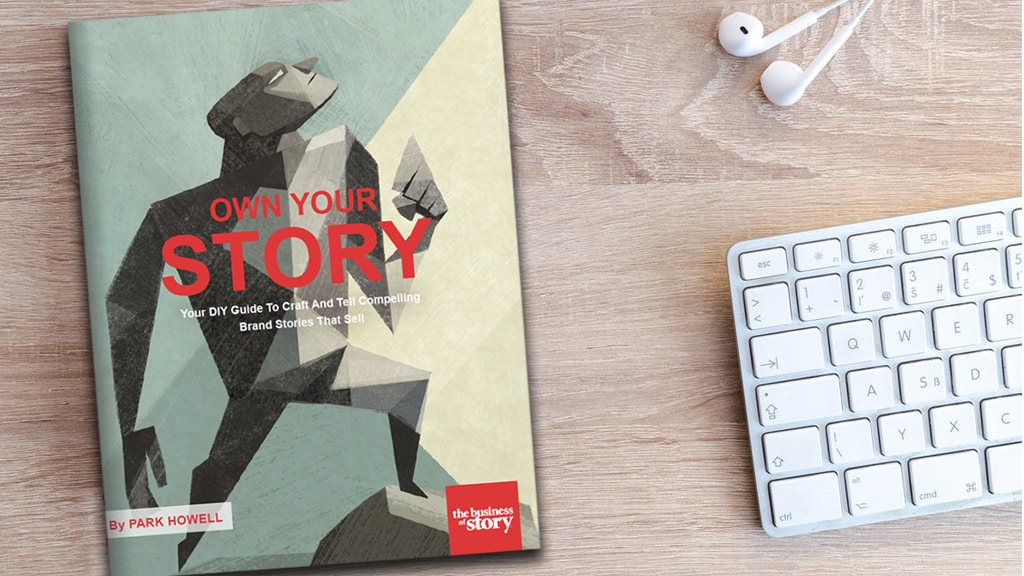
And thank you for listening to this special, one-hundred-first episode of the Business of Story podcast. Gag, you’re probably hoping that I don’t return solo for another hundred shows.
And one last request. We have 74 reviews on iTunes, and I’d love to push that over the 100 mark in celebration of our one hundred and first episode. Would you do me a huge and be one of those listeners that pushes us over the top of the century mark in reviews. It only takes minutes and would mean the world to me. I appreciate it.
Finally, I want to remind you that regardless of what you do with your business, leadership and sales storytelling, that…
“The most potent story you will ever tell is the story you tell yourself. So make it a good one.”
Your Storytelling Resources:
Connect with me:
- Instagram: https://www.instagram.com/parkhowell/
- Facebook: https://www.facebook.com/groups/BusinessOfStory
- YouTube: https://www.youtube.com/channel/UC0ssjBuBiQjG9PHRgq4Fu6A
- Twitter: https://twitter.com/ParkHowell
- LinkedIn: https://www.linkedin.com/in/parkhowell/
- Website: https://businessofstory.com/abt/
#StoryOn!
 Listen To More Episodes
Listen To More Episodes


